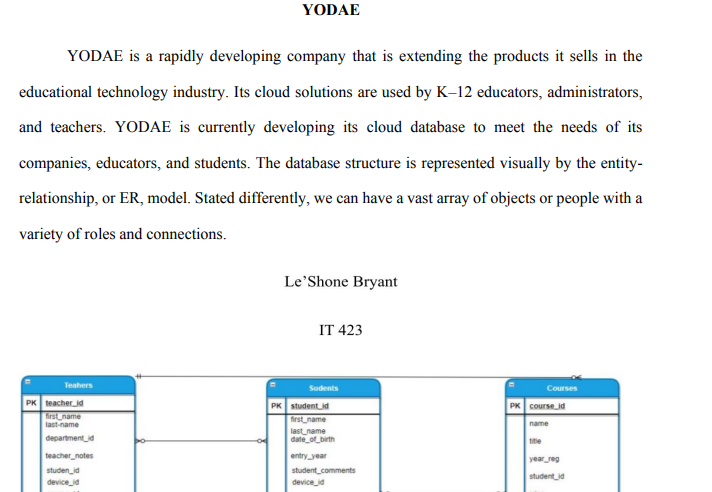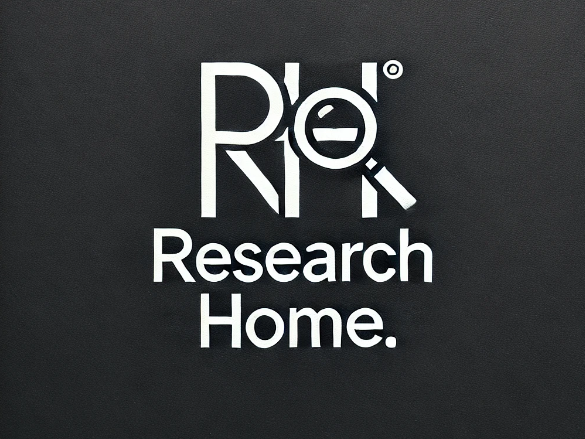Project Two-Competency-In this project, you will demonstrate your mastery of the following competency:
- Determine the implications involved in the design of an internet of things (IoT) software application

Scenario
After you worked at YODAE as its lead solution architect for a few years (see Project One), an opportunity to become its first information security officer (ISO) appeared. You took the position because you wanted to gain experience in a different kind of role. Not only has your role changed, but the number of cloud services and products that your organization offers has increased due to market demands.
Due to increasing market demands, YODAE now offers IoT devices for K-12 teachers (such as voice-activated personal assistants, handheld student devices, IoT white boards, IoT smart speakers, and IoT cameras). With YODAE’s new products, K-12 teachers are able to integrate IoT devices into their classrooms to enhance the classroom experience for their students. The IT professionals (such as network administrators, help desk technicians, and systems support specialists), school administrators, and teachers who work in the schools are interested in learning more about these IoT devices and their implications. As YODAE’s new ISO, you have been asked to inform these users about the implications of such devices. To accomplish this task, you will create a white paper to inform the IT professionals, teachers, and school administrators about YODAE’s IoT devices. To have a better idea as to the IoT devices that YODAE offers, review the YODAE Business Case in the Supporting Materials section.
Before you were hired as YODAE’s new ISO, the chief information officer (CIO) proposed an architectural design of how the IoT devices should be implemented in schools. The CIO asked you to review the proposed architectural design to find any errors, especially in regard to the three components of information security: confidentiality, integrity, and availability. Then you concluded that you should provide some guidance on the design of the IoT devices in your white paper to help other users understand the importance of the design of IoT applications. You will also propose solutions on how common IoT design and architecture errors can be addressed.
Directions
Create a white paper using APA format with citations. You may use the White Paper Guidelines document in the Supporting Materials section. Your white paper must address the following:
IoT Devices: Select at least two of the IoT devices introduced in the scenario. Then describe the IoT devices and potential use cases. You may reflect on:
- How would you explain what each IoT device does to someone who has little to no experience with the internet of things or cloud computing?
- What features does each IoT device offer?
- How are the IoT devices installed and configured?
- How could this IoT device be used in schools and classrooms?
Background Information: By reviewing and citing the resources within the course or a previous course that you took in your program, or by using the Shapiro Library’s Information Technology library guide, explain how cloud computing is inexorably linked to IoT, explain how IoT data is stored, and describe the vulnerabilities, risks, and issues with such devices. In your explanation, you should also address:
- How are cloud computing and the internet of things connected?
- How is data from the IoT devices collected and stored?
- What are the vulnerabilities, risks, and other issues involved?
- What are the layers of an IoT architecture?
Errors in the Design of IoT: Identify 3 to 5 potential errors and issues that may occur with the design of the IoT in the context described in the scenario. As you explain potential errors in your white paper, you must consider:
- Confidentiality: Are there any privacy errors in the architectural design?
- Integrity: Are there errors that reduce the accuracy, consistency, or trustworthiness of the data collected and stored on any of the devices?
- Availability: What are the system uptime, software updates, connection with the internet, or maintenance requirements based on the devices? How can internet providers affect systems?
Solution Diagram: Suggest appropriate preventative measures and solutions to address the issues and errors that you identified by creating a diagram. Your diagram should include improvements from the visual representation of the YODAE IoT Classroom Design document (see Supporting Materials).
Propose Solutions: Then write a paragraph explaining the solutions within your diagram and address the following questions:
- Confidentiality: How do your solutions improve user privacy?
- Integrity: How do your solutions improve the integrity of the data?
- Availability: How do your solutions affect the availability of the system? Do they change the maintenance times?
Ethical and Societal Implications: Describe any ethical and societal implications of the design of IoT that you think should be considered by the IT professionals, administrators, or teachers who are working in the schools. You must include how IoT can positively and negatively impact society. Perhaps you may even consider the impact on parents if their child engages with the IoT at school. To help you determine these implications, you may want to reflect on:
- What are ethical stances that both IT and educational professionals would need to consider if they integrate YODAE’s IoT devices into schools?
- What seems right or wrong about these devices, and why?
- Is there a specific IoT device that seems problematic for the context that it will be implemented in?
- Just because these products are on the market, should you promote them and encourage the use of them?
Citations: You must use APA format to cite any source that you used to gather your information. You’ll also want to include a References page at the end of your white paper. This page is helpful in the event that the professionals reviewing your white paper want to learn more about the technology. In most companies, the readers of the white paper are likely to want to learn more about the subject, and the references allow them to research topics of interest.
What to Submit
To complete this project, you must submit the following:
White Paper
Your white paper should be 3 to 5 pages in length in APA format. References page is not included in the page count. The file you upload should be a Word .doc.
Supporting Materials
To complete this project, you must submit the following:
YODAE IoT Classroom Design
This document is a visual representation of how YODAE’s IoT devices can be integrated into a classroom setting. This visual representation may assist you in understanding how YODAE’s IoT devices are set up in the classroom setting.
YODAE Business Case
This business case provides you with more organization background and the business needs.
White Paper Guidelines
These guidelines will help you format and outline your paper. You do not have to follow the guidelines to structure your paper, but they can help if you have not written a paper like this before.
Answer Preview-Project Two-IT-423

